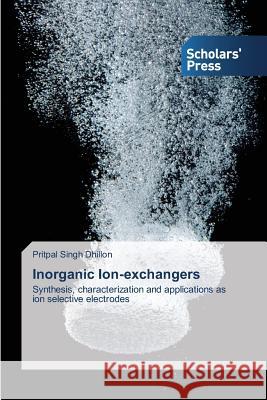Inorganic Ion-exchangers » książka
Inorganic Ion-exchangers
ISBN-13: 9783639713299 / Angielski / Miękka / 2014 / 92 str.
An ion-exchange is an established unit operation and is an important supplement to procedures such as filtration, distillation and adsorption. In the laboratories, ion-exchangers are used as an aid in analytical and preparative chemistry. However, the most important application is still the purification and demineralization of water, a perennial challenge since the time of Aristotle and Moses and a task which the growth of population and industries has made even more pressing than ever before. The inorganic ion-exchangers exhibit high selectivities for specific ions resulting in the separation factors much larger than those exhibited by organic resins. The inorganic ion-exchangers unlike organic ion-exchangers have rigid structures and do not undergo appreciable dimensional change during the ion-exchange reactions. The rigid structure leads to specific and unusual selectivities. Earlier attention was focused on hydrous oxides since it was known that they sorbed or co-precipitated many ions. It was soon discovered that hydrous oxides combined with anions such as phosphates, vanadates, molybdates and antimonates produced superior ion-exchangers.
An ion-exchange is an established unit operation and is an important supplement to procedures such as filtration, distillation and adsorption. In the laboratories, ion-exchangers are used as an aid in analytical and preparative chemistry. However, the most important application is still the purification and demineralization of water, a perennial challenge since the time of Aristotle and Moses and a task which the growth of population and industries has made even more pressing than ever before. The inorganic ion-exchangers exhibit high selectivities for specific ions resulting in the separation factors much larger than those exhibited by organic resins. The inorganic ion-exchangers unlike organic ion-exchangers have rigid structures and do not undergo appreciable dimensional change during the ion-exchange reactions. The rigid structure leads to specific and unusual selectivities. Earlier attention was focused on hydrous oxides since it was known that they sorbed or co-precipitated many ions. It was soon discovered that hydrous oxides combined with anions such as phosphates, vanadates, molybdates and antimonates produced superior ion-exchangers.











